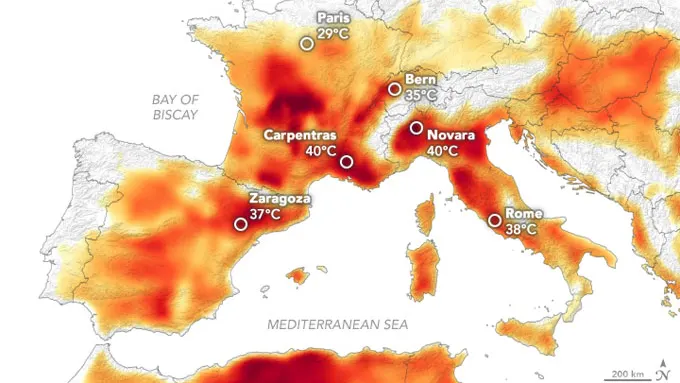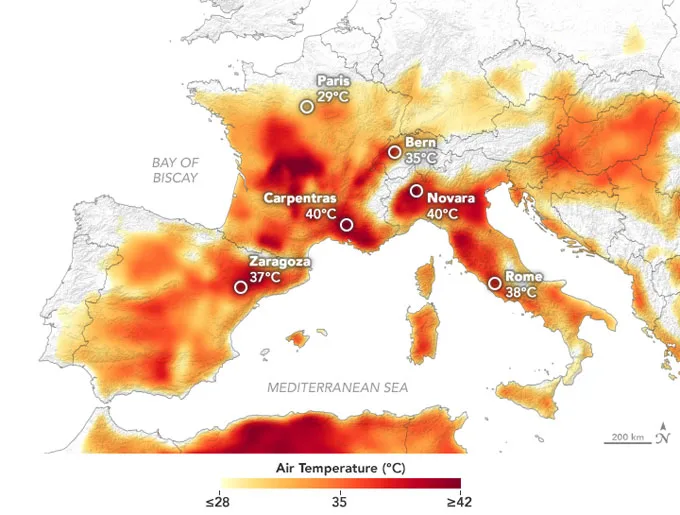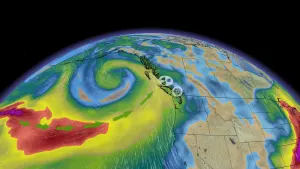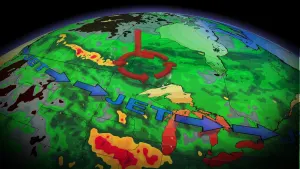
European heat wave found to be 5x more likely with climate change
What's Up In Climate Change - a weekly glance at the most important news about our warming world
In the wake of a scorching June heat wave across Europe, scientists with World Weather Attribution were quick to weigh in on the impacts of climate change on this record-setting event.

This map plots out Europe's June heat wave, with temperatures on June 27, 2019. Some of these are all-time records. Credit: NASA Earth Observatory
According to NASA: "On June 27, an awareness report from the Network of European Meteorological Services specified 'very dangerous' temperatures — the highest alert level — in parts of Spain, France, Switzerland, and Croatia. The meteorological department in France listed numerous cities where records for the hottest June day were broken, many of which were set during the deadly heatwave in 2003. France's national record for the hottest temperature (of any time of the year), set in 2003, was broken in the town of Carpentras, which hit 45.9°C (114.6°F) on June 28 at 4:20 p.m. local time."
Based on their analysis of the weather patterns that contributed to the heat wave, and the temperatures reached during the event, World Weather Attribution gives a very conservative estimate that this heat wave was at least five times more likely due to human-caused climate change.
According to their analysis: "For the average over France we find that the probability has increased by at least a factor five (excluding the model with very strong bias in variability). However, the observations show it could be much higher still, a factor 100 or more."
For more, read the entire report on the WWA website.
ANTARCTIC GLACIER INSTABILITY THREATENS RAPID SEA LEVEL RISE

Ice calving off Antarctic glaciers is a natural process, but the increased rate due to warming oceans is of great concern. Credit: NASA/OIB Jeremy Harbeck
While it is perfectly normal and natural to see large chunks of ice crumble off the leading edge of glacial ice shelves, in recent years, scientists have been seeing the rate of this ice loss increasing due to climate change.
For scientists watching these ice shelves in the Antarctic, the growing concern is that some of the largest and most important glaciers are becoming increasingly unstable.
By modelling the instability in the Thwaites Glacier, in West Antarctica, researchers at the Georgia Institute of Technology, the University of Washington, and NASA have found that temperatures actually do not need to rise any further for the instability in the Thwaites Glacier to be pushed past a tipping point.
"If you trigger this instability, you don't need to continue to force the ice sheet by cranking up temperatures. It will keep going by itself, and that's the worry," study lead Alex Robel, from Georgia Tech, said to Georgia Tech Research Horizons. "Climate variations will still be important after that tipping point because they will determine how fast the ice will move."
"After reaching the tipping point, Thwaites Glacier could lose all of its ice in a period of 150 years," study co-author Helene Seroussi, from NASA's Jet Propulsion Laboratory. "That would make for a sea level rise of about half a meter (1.64 feet)."
That would more than double the current sea level rise from climate change.
Read more on the Research Horizons website.
Come back every Thursday for more What's Up In Climate Change.











